Get a taste of New Orleans with this savory and delicious Creole Pheasant Gumbo Recipe! Smoky sausage, vegetables, spices and succulent pheasant make it an awesome pheasant recipe that’s great for sharing.
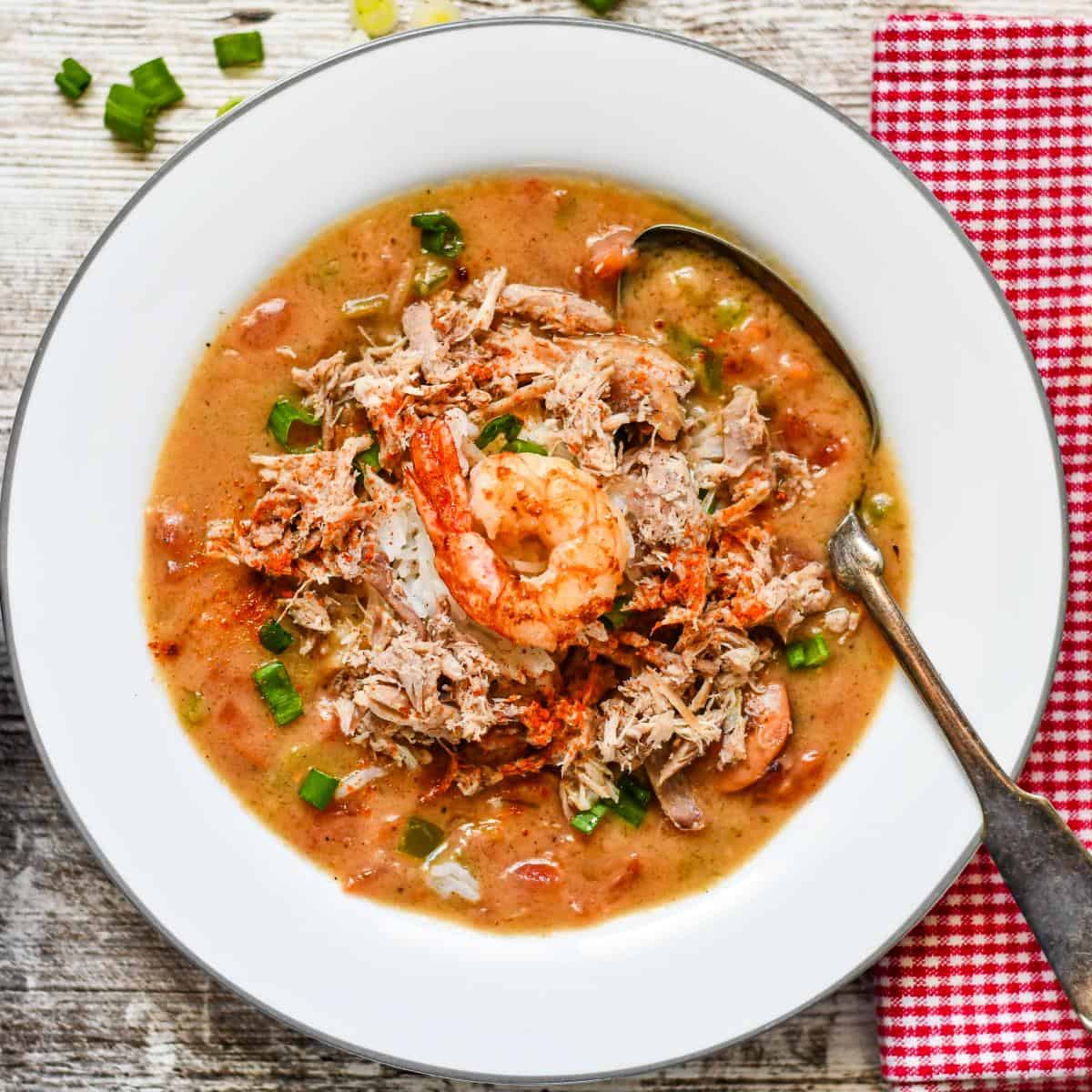
The snow keeps coming here in North Dakota, as does the depressing news that we are getting more snow! Ironically, I found myself staring into my basement deep freezer looking for something to warm me up.
I dove down deep into the vast array of vacuum sealed bags of wild game and came up with one labeled "Pheasants Breasts - 1 pound - December 30, 2021." Another new pheasant recipe! I created this Creole Pheasant Gumbo Recipe to warm the stomachs and hearts of my family, and to ease the news that we were staying in North Dakota over our daughter's spring break.
As you probably have gathered from my other dishes on this website, I love making comfort food style recipes that use lots of fresh produce and wild game. This gumbo is no exception. It is definitely in my top favorite pheasant breast recipes of all time! Nothing tastes better on a cold winter day.
Creole Gumbo vs Jambalaya
Jambalaya is primarily a rice dish (think paella). Gumbo is more of a stew that will thicken with a roux. Both creole gumbo and jambalaya can be made with similar meats and vegetables. However, the process of making them and the flavors of the end result are completely different.
What Is Gumbo?
This iconic Gumbo dish represents everything I love about Cajun cuisine and Louisiana cooking. With ordinary ingredients, the right seasonings, and patience, the results are extraordinary.
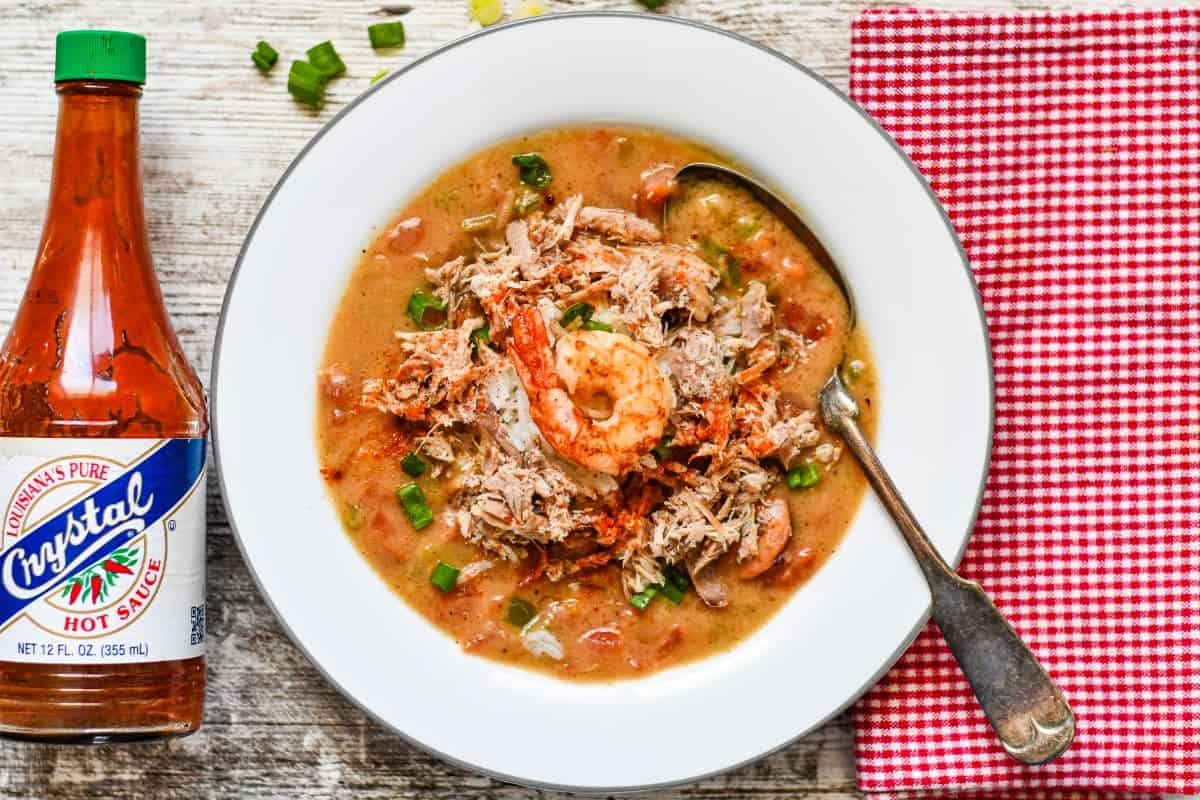
You can learn a lot about the history of Southern food by studying a bowl of gumbo. The very name conjures up a rich array of ingredients coming together in a single pot and melding into something rich and delicious. It represents the intersection of three cultures—European, Native American, and West African—that created what we know today as Southern cuisine.
At its most basic, what we call gumbo today is a savory stew made with a variety of meats or seafood combined with an array of vegetables and herbs. From there, all bets are off. Gumbo can be as thin as soup or as thick as gravy. The proteins might be shrimp and deer shanks or pheasant and bear sausage. The stew should have okra, gumbo filé powder (powdered sassafras leaves), a dark roux (a blend of oil and flour cooked slowly until well browned), or any combination of the three.
Where Does Gumbo Come From?
In several West African languages, the word for okra is ki ngombo, or, in its shortened form, gombo." Early on, the word was frequently used alongside "okra" by English writers. In the 1840s, when okra was just starting to be grown widely outside the coastal South, newspaper ads commonly offered seeds for "Okra or Gombo." "Gombo" is still the French word for okra today.
Gumbo’s roots run deep in Louisiana. French colonists brought enslaved Africans to Louisiana starting in 1719. By 1721, Africans made up more than half of New Orleans’ population. The first known mention of gumbo appeared in a 1764 interrogation transcript. Authorities questioned Comba, a 50-year-old enslaved woman, about giving un gombeau to a slave named Louis. She admitted she had.
Good Gumbo
The secrets to a good Creole gumbo like this Pheasant Gumbo or my Duck Gumbo aren't anything fancy either, but if you take the time to do them right, your gumbo will be just as good as the ones served in New Orleans.
The first? Make sure to brown the sausage and pheasant until they both have crispy caramelization. Secondly, don't fear the roux. Brown is the color of flavor so always make sure to stir vegetable oil and flour together until it reaches a true chocolate hue.
How To Make A Roux For Pheasant Gumbo
There's a joke in South Louisiana that every recipe starts with, "First you make a roux"—an exaggeration, to be sure, but one that's not far off in Southern and many other cuisines.
Roux thickens and adds flavor to all kinds of gravies, sauces and soups, especially a dark and smoky gumbo. It's not just for Louisiana cooking, but great for cozy foods you want to eat to ward off the lingering winter chill here in North Dakota.
Though the formula for a roux is simple—one part fat to one part flour—it's also incredibly versatile, depending on the type of fat you use and how long you cook it. To make a roux, you heat the fat, then sprinkle in the flour and constantly stir, stir, stir until it's the color you want.
The fat you use will affect the final flavor of your dish. Butter is excellent for a blond roux to use as a base for a béchamel or velouté sauce. You can even use butter in a brown roux, say for an étouffée. However, do not, under any circumstances, use butter for a gumbo roux. Never!
For this pheasant gumbo, I prefer to use a neutral vegetable oil, such as canola or a blend (but never olive oil). Darker roux can also be made with flavorful oils, such as peanut, which also has the benefit of a high smoke point, so you can cook it over higher heat. Even pan drippings, like bacon or duck fat, will work. (Gravy is roux based, after all.)
Color is everything: A roux is named for its color. The longer you cook it, the darker it will get; though the darker it becomes, the less thickening power it has. You eventually cook all the starch out of the flour. For any roux, use a cast iron skillet or other thick-bottomed pan that conducts heat evenly.
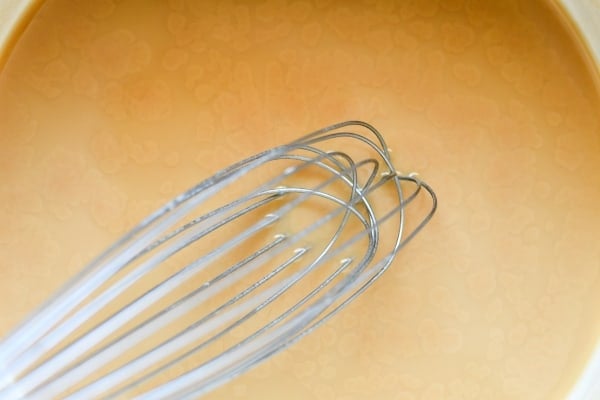
A Dark Roux Takes 20-30 Minutes
A dark roux is what gives a Cajun and Creole gumbo its deeply toasted, complex flavor. They require a lot of cooking, constant stirring and patience. Though it helps to use oil with a higher smoke point so you can turn up the heat a little higher, there's no real shortcut to making a dark or any other kind of roux.
How To Make The Best Creole Pheasant Gumbo
1. Poach the pheasant breasts by placing them in a Dutch oven, and cover with water. Bring to a boil, then reduce the heat to medium-low and simmer for 10-12 minutes or until the internal temperature of the pheasant reaches 160 degrees F. I use this instant read meat thermometer to check as overcooked pheasant will be dry and awful.
2. Transfer the pheasant to a cutting board or bowl and shred it with 2 forks and place in the refrigerator until later.
3. Combine the vegetable oil and flour in the Dutch oven over medium heat. Whisk slowly and constantly for 20 to 25 minutes to make a brown roux, the color of a copper penny.
4. Add the onion, celery, and bell pepper and continue to stir for about 5 minutes, until softened.
5. Add the minced garlic and sauté another 2 minutes.
6. Add the chicken broth, diced tomatoes, salt, celery salt, and cayenne. Stir until the roux mixture and broth are well combined. Bring to a boil, then reduce heat to medium-low. Cook, uncovered, stirring occasionally, for 20 minutes.
7. Turn off the heat, add the shrimp and sausage and cooked pheasant and stir to combine. Add the file powder and green onions while stirring constantly. Cover and allow to sit for 10 minutes prior to serving. Serve over rice with hot pepper sauce so everyone can choose whether or not they want it spicy or not.
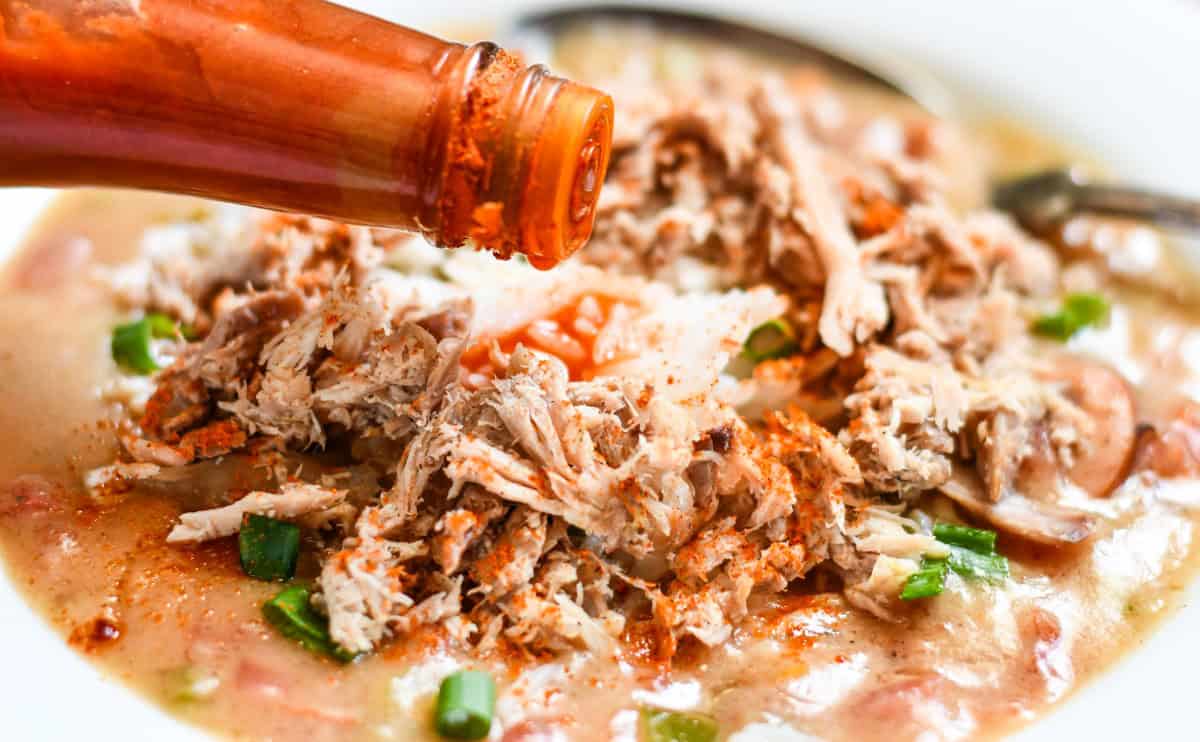
Gumbo Serving And Freezing Directions
Store this Creole Pheasant Gumbo covered in the refrigerator for 3-4 days. The roux can actually be made 3-5 days in advance, stored in a large resealable bag in the fridge.
This recipe doesn't make a ton, but if you are single and want to save some for leftovers, it freezes really well. To freeze, allow it to cool completely and store it in a freezer safe container (separate from the rice) for 2-3 months. Thaw overnight in the refrigerator and reheat on the stove or in the microwave.
More Pheasant Recipes
If you are looking for more great ways to use pheasant in your diet, be sure and check out my Pheasant Fritters and Buffalo Pheasant Dip and Pheasant and Potato Gnocchi Soup.
Come Pheasant Hunting In North Dakota
If you head my way to hunt pheasants in North Dakota, check out the Top 5 Places in North Dakota to Hunt Pheasants. And if you want me to come along with you as your camp cook, photographer, or butcher, you can find out more details here.
If you want to do a DIY public land hunt here in North Dakota, I highly suggest you take the time to read this article from Project Upland on "Tactics to Increase Public Land Hunting Success" written by Kyle Hedges.
Join Our Wild Game Cooking Community
Sign up here to receive a new recipe in your email inbox every Tuesday morning!
DID YOU MAKE THIS RECIPE
If you make this Creole Pheasant Gumbo Recipe, tag @wildgameandfish so I can share it on my Instagram stories.
Did you enjoy this Pheasant Recipe? Be sure to leave a 5-star rating RIGHT HERE!
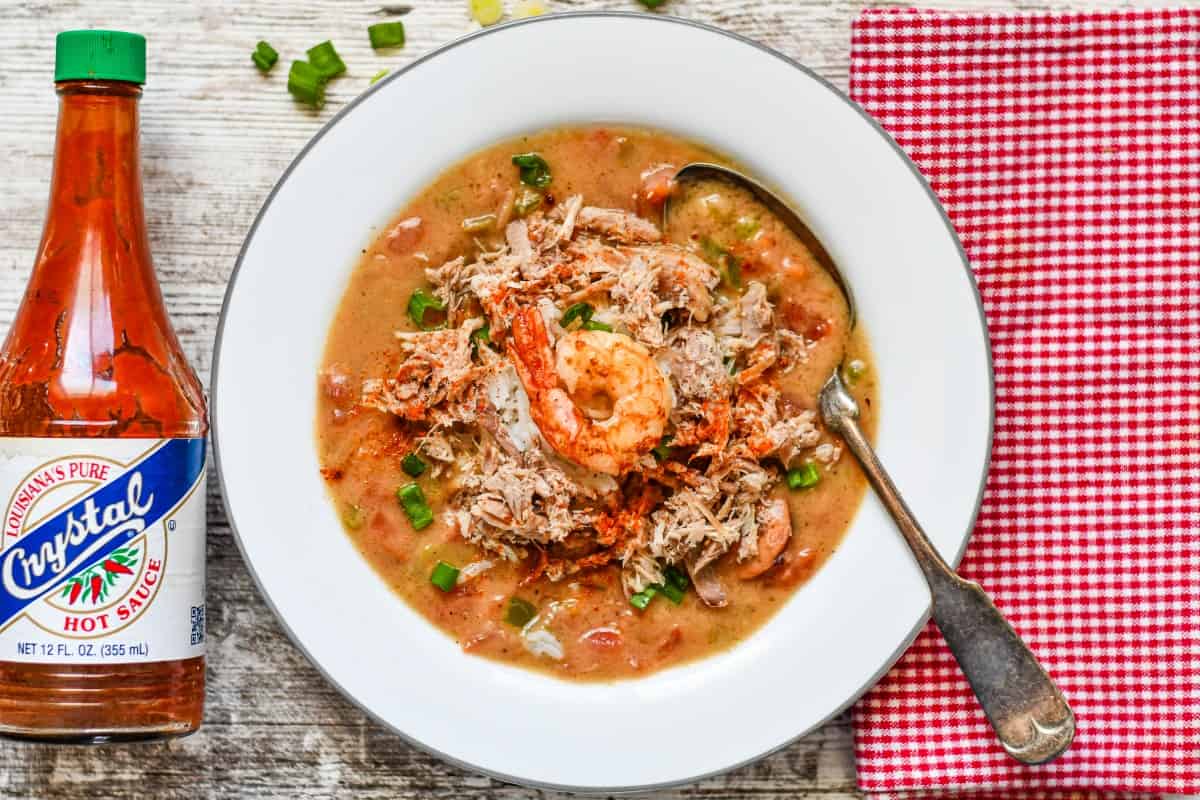
The Best Creole Pheasant Gumbo Recipe
Ingredients
- 4 pheasant breasts
- 1 cup vegetable oil
- 1 cup all purpose flour
- 1 cup yellow onion, diced
- 1 cup celery, diced
- 1 cup bell pepper, diced
- 1 tablespoon minced garlic
- 6 cups chicken broth
- 1 10-ounce can Rotel diced tomatoes with green chilies
- ½ teaspoon salt
- ½ teaspoon celery salt
- ¼ teaspoon cayenne pepper
- ½ pound andouille smoked sausage, sliced into ½-inch pieces
- ½ pound raw, whole, head-on medium sized (30-50 count) shrimp
- 1 tablespoon file gumbo powder
- ½ cup green onions, chopped
- 2 cups white rice, cooked
- hot pepper sauce
Instructions
- Poach the pheasant breasts by placing them in a Dutch oven, and cover with water. Bring to a boil, then reduce the heat to medium-low and simmer for 10-12 minutes or until the internal temperature of the pheasant reaches 160 degrees F. I use this instant read meat thermometer to check as overcooked pheasant will be dry and awful.
- Transfer the pheasant to a cutting board or bowl and shred it with 2 forks and place in the refrigerator until later.
- Combine the vegetable oil and flour in the Dutch oven over medium heat. Whisk slowly and constantly for 20 to 25 minutes to make a brown roux, the color of a copper penny.
- Add the onion, celery, and bell pepper and continue to stir for about 5 minutes, until softened.
- Add the minced garlic and sauté another 2 minutes.
- Add the chicken broth, diced tomatoes, salt, celery salt, and cayenne. Stir until the roux mixture and broth are well combined. Bring to a boil, then reduce heat to medium-low. Cook, uncovered, stirring occasionally, for 20 minutes.
- Turn off the heat, add the shrimp and sausage and cooked pheasant and stir to combine. Add the file powder and green onions while stirring constantly. Cover and allow to sit for 10 minutes prior to serving. Serve over rice with hot pepper sauce so everyone can choose whether or not they want it spicy or not.
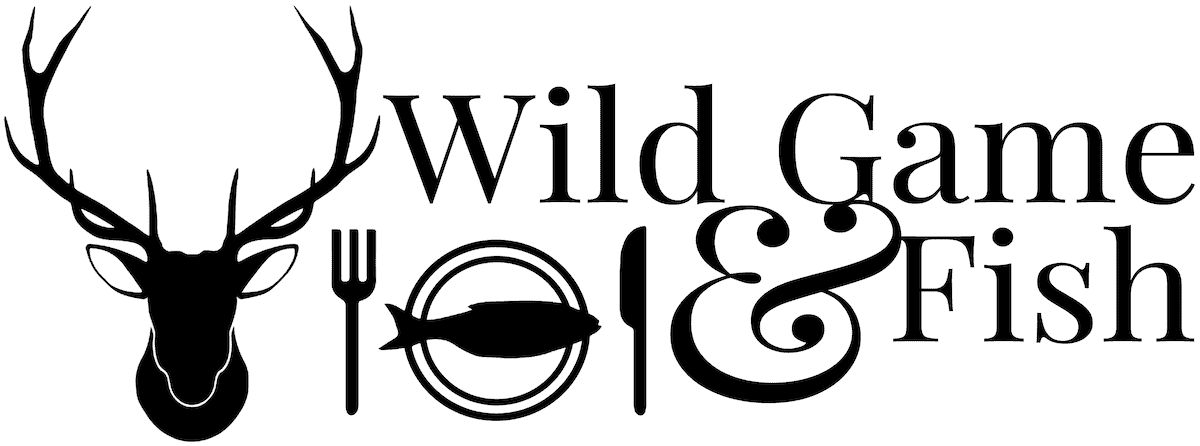

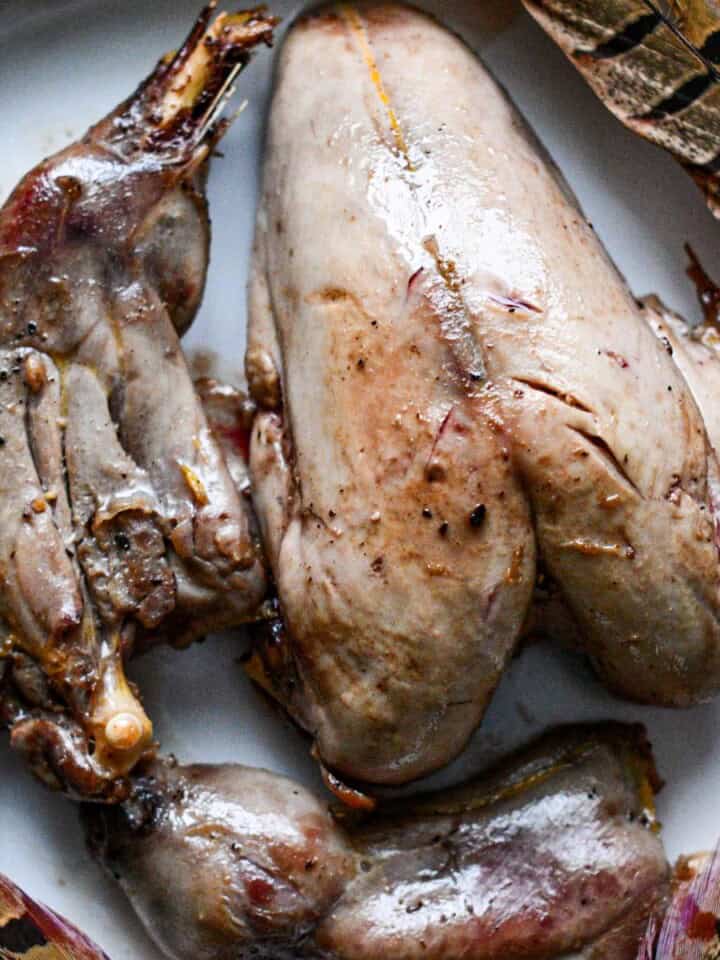
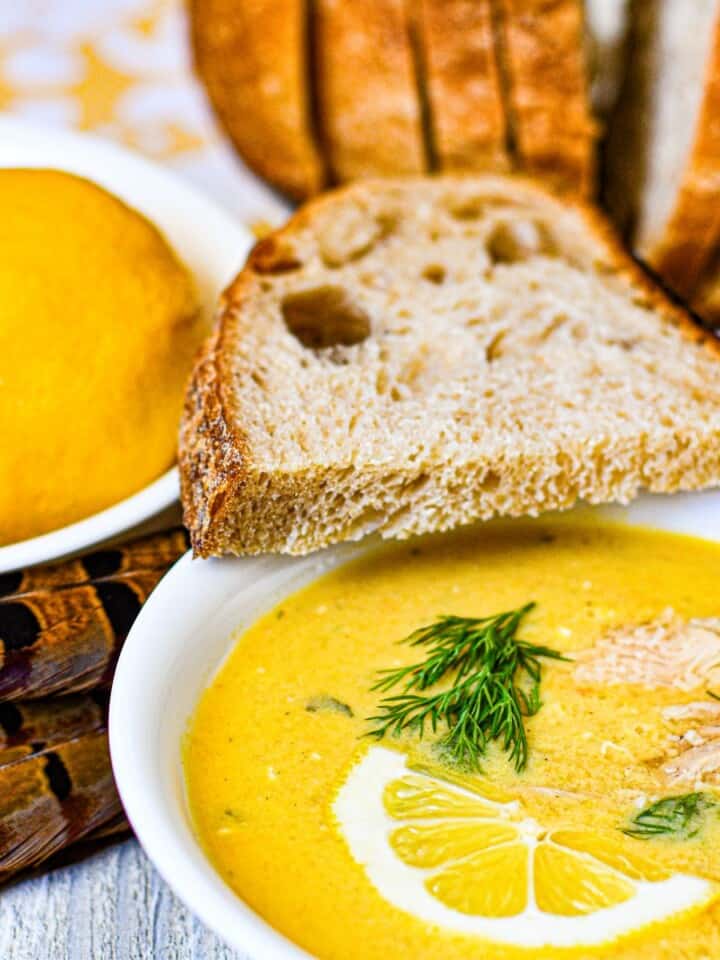
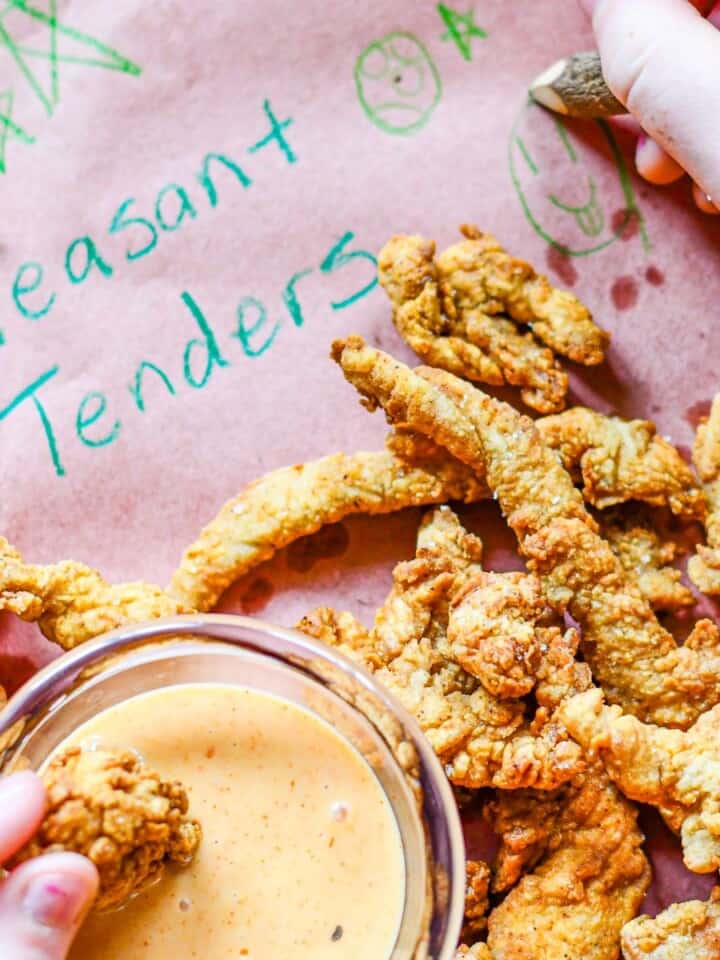
Melissa says
Best pheasant recipe ever!
Kelly says
Amazing!! Step by step delicious recipe
Kelly says
Delish!! Amazing recipe!!
Jeff Benda says
Thanks Kelly! So glad you liked the pheasant gumbo as much as we do!
Dennis Marshall says
Can this recipe be made with Wild Duck breast in place of the Pheasant as it calls for? Or will the flavor range of the Wild Duck be overpowering, instead of being complementing to the other ingredients in this recipe? The Duck’s have primarily (90%-95%) been on a steady diet of rice from the rice fields that are around us here in the Texas Rice Belt and have not yet begun to feed in the mid Texas Coastal waters of the Gulf of Mexico which will often create a strong if not overpowering flavor in the meat of the Duck’s. I am asking this because I do not have access to any Pheasant, either Wild or Farm Raised, but would like to make a unique, wonderful and delicious dinner for my wife as a way to celebrate her for simply being the greatest Woman, Wife and Mother that I have ever and will ever know. She is more than my Wife. She is my grounding rod, my anchor, and though she may not realize it, she is my World.
Jeff Benda says
Great question Dennis. Because this pheasant gumbo calls for poaching the pheasant breast, I would not recommend doing that with a duck breast. Instead I would direct you to my Duck Gumbo Recipe where I cook the duck breasts in a hot skillet. Here is the recipe: https://wildgameandfish.com/duck-gumbo/
Dennis Marshall says
Thank you. Took your advice and it came out amazing.
Dennis Marshall says
On another note, I noticed that in the instructions for the Pheasant Gumbo, you didn’t say when to put in the Pheasant. I assume that it is with the Shrimp and Sausage, just wanted to give you a FYI. We are going to make this particular recipe for Christmas.
Jeff Benda says
Great catch! I updated the recipe and will definitely want to recruit you when it's time to start recipe testing for the upcoming cookbook!
Dennis Marshall says
You mean eat food that is based off a professional chef’s recipe builds? How could I turn that down? My wife and I have both enjoyed many of your recipes and as an avid hunter and fisherman, it definitely keeps room in the freezer for fresh protein. Thanks again and please keep up the great work. It’s nice to have such a variety of recipes to choose from and make each meal as exciting as the last.
Brenda says
Best Gumbo Ever!
Jerry says
Delicious!